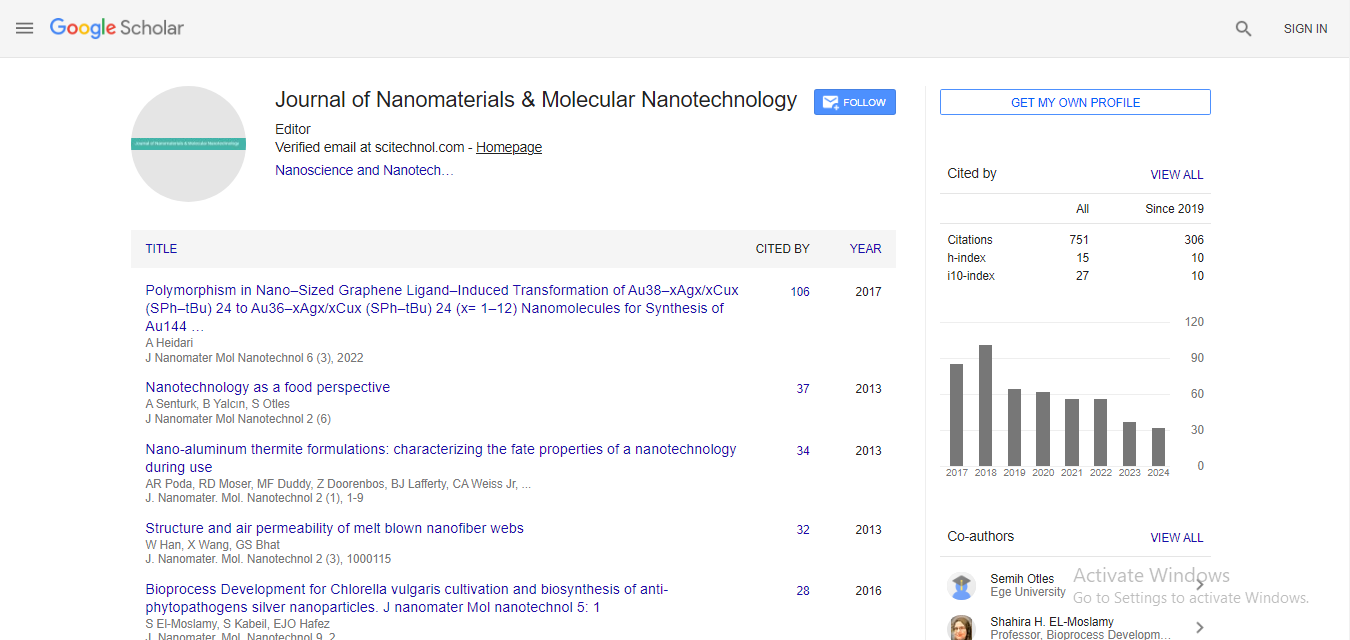Highly selective localized surface plasmon resonance sensor for explosives detection
Volodymyr Chegell,* Andrii Lopatynskyi, Vitalii Lytvyn, Petro Demydov, Sergey Piletsky and Christopher Zalesky
ISP NANU, Ukraine
University of Leicester, UK
: J Nanomater Mol Nanotechnol
Abstract
Globally, there is a problem concerning growing terrorism activity and lack of suitable tools for sensitive and selective detection of explosives. A number of attempts were made to address this problem using various recognition elements and sensor principles [1-2]. Each of such methods has advantages, but overall they suffer from the fact that it is extremely difficult to combine sensor robustness with high sensitivity necessary for detecting trace quantities of explosive material [3]. For this reason attention of analytical scientists and engineers has been focused on the development of artificial receptors such as molecularly imprinted polymers (MIPs) [4]. MIPs have good binding affinity to relevant forensic and environmental targets, which is typically expressed in subnanomolar dissociation constants. This work presents a novel portable sensor system for the registration of molecules of explosives created on the basis of a localized surface plasmon resonance (LSPR) phenomenon in gold nanoparticle (GNP) arrays together with technology of high selective MIP nanoparticles (Figure 1). The novelty of the developed sensor type lies in the development of a new generation of high performance MIP-GNP composites by controlled living polymerization [5]. Optical transduction of molecular recognition events in MIP-GNP assemblies is based on the measurement of complex refractive index changes in the composite medium induced by the binding of target molecules to the specific imprinted sites of MIP under the conditions of LSPR nanoantenna effect. The developed MIP-LSPR sensor allows real-time highlysensitive and selective detection of explosives molecules in liquid or gas phases. For example, the 10-12 M limit of detection for picric acid was achieved.
Recent Publications:
1. Yinon J., Ed. Counterterrorist detection techniques of explosives. Elsevier Science B.V., Amsterdam, 2007, 440 p.
2. Riskin M., Ben-Aram Y., Tel-Vered R., Chegel V., Almog J., Willner I. (2011). Molecularly imprinted Au nanoparticles composites on Au surfaces for the surface plasmon resonance detection of pentaerythritol tetranitrate, nitroglycerin, and ethylene glycol dinitrate. Anal. Chem., 83, 3082-3088
3. Sohn H., Calhoun R. M., Sailor M. J., Trogler W. C. (2001). Detection of TNT and picric acid on surfaces and in seawater by using photoluminescent polysiloles. Angew. Chem. Int. Ed., 40, 2104- 2105.
4. Poma A., Guerreiro A., Whitcombe M. J., Piletska E., Turner A. P. F., Piletsky S. (2013). Solidphase synthesis of molecularly imprinted polymer nanoparticles with a reusable template (“plastic antibodies”). Adv. Functional. Mater., 23, 2821-2827.
5. Mijangos I., Guerreiro A., Piletska E., Whitcombe M. J., Karim K., Chianella I., Piletsky S. (2009). Macroradical initiated polymerisation of acrylic and methacrylic monomers. J. Sep. Sci., 32, 3340- 3346.
Biography
Volodymyr I. Chegel, DSc in Physics and Mathematics, Leading Researcher, Head of Plasmonics group in the Department of Functional Transducers for Sensor Technology at the V. Lashkaryov Institute of Semiconductor Physics, National Academy of Sciences of Ukraine and Professor at Taras Shevchenko National University of Kyiv. His research interests are focused on plasmonics, nanotechnology, materials science, biological and chemical sensors, design of optoelectronic devices.
 Spanish
Spanish  Chinese
Chinese  Russian
Russian  German
German  French
French  Japanese
Japanese  Portuguese
Portuguese  Hindi
Hindi 



